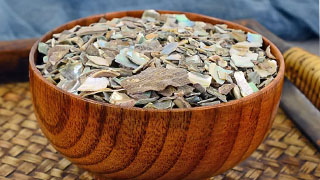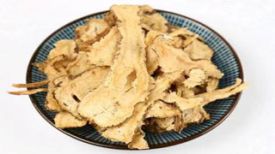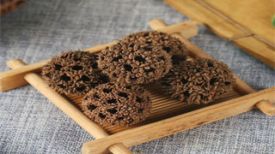
1. Aliases
Abalone shell, light bottomed sea chestnut, sea chestnut, nine hole stone chestnut, abalone skin, golden clam skin.2. Animal morphology
The shell is elliptical in shape, with three spiral layers and shallow sutures. The spiral part is extremely small, and the body spiral part is extremely wide, accounting for almost all of the shell. The top of the shell is blunt and slightly higher than the body screw. There are over 30 protruding small holes from the middle of the second spiral layer to the edge of the body spiral. The front protrusion is small but not significant, with 6-9 openings at the end, and the opening is level with the shell surface. The surface of the shell is green brown; The inner surface is white with colorful luster, and the shell is elliptical in shape, almost equal in size to the body spiral layer.
3. Origin distribution
They often live near the low tide line to the intertidal rocks or on the seabed. Distributed along the coasts of Guangdong, Hainan, Taiwan, and Fujian.
4. Harvesting and processing
Capture in summer and autumn, remove meat, wash away adhered impurities, and sun dry.
5. Characteristics of medicinal herbs
Long oval or oval shaped, slightly ear shaped when viewed from the inside, 7-9 centimeters long, 5-6 centimeters wide, and about 2 centimeters high. The surface is dark red, with many irregular spiral ribs and fine growth lines. The spiral part is small, while the body spiral part is large. There are more than 30 warty protrusions arranged from the top of the spiral part to the right, with 6-9 openings at the end, and the opening is level with the shell surface. The inner surface is smooth and has a pearl like colorful luster. The shell is thick, hard, and not easily broken. Mild in flavor and slightly salty in taste.
6. Nature, taste, and meridian tropism
Cold in nature and salty in taste. Guigan Meridian.
7. Effect and function
Calm the liver and remove yang, clear the liver and brighten the eyes. It belongs to the subcategory of liver calming and wind calming medicines and is a type of liver yang suppressing medicine.
8. Clinical applications
Dosage 3-15 grams, fry first. Used to treat headaches, dizziness, blurred vision, and cyanosis.
9. Pharmacological research
Experiments have shown that its extract has a strong inhibitory effect on Staphylococcus aureus, Escherichia coli, and Pseudomonas aeruginosa; The hydrolysate of the inner layer of its shell can significantly reduce the alanine aminotransferase in mice with acute carbon tetrachloride poisoning. Its acidic extract has significant anticoagulant effects on rabbits both in vivo and in vitro. The extract of its shell has a significant oxygen tolerance effect on ammonia deficiency in mice under normal pressure; It can also increase the perfusion of isolated mouse lungs and dilate the smooth muscles of the trachea and bronchi (dilation rate of 17%). The water decoction and alcohol precipitation extract have immunosuppressive effects on experimental mice.
10. Chemical composition
Mainly containing calcium carbonate. It also contains organic matter and small amounts of magnesium, iron, silicates, sulfates, phosphates, chlorides, and extremely trace amounts of iodine.
11. Taboos for use
Patients with spleen and stomach deficiency and cold should take it with caution, and those with indigestion or stomach acid deficiency should abstain from taking it.
12. Compatibility prescription
① Treatment of hypertension: a. 30g of raw stone cassia, 30g of raw oysters, 15g of raw rehmannia, and 9g of chrysanthemum. Boiled in water. Three times a day. b. 30 grams of stone cassia, 30-60 grams of grass cassia, 12-15 grams of Eucommia ulmoides, and 30-60 grams of summer withered grass. Boiled in water. c. 30 grams of Shixiaming, 24 grams of Gouteng, 9 grams of Silkworm, 9 grams of Chrysanthemum, and 15 grams of Xiakucao. Water decoction (suitable for elderly patients with hypertension and headache). (Qingdao Chinese Herbal Medicine Handbook)
② The wind control toxic gas enters the head, causing confusion and disadvantageous effects on the head: 30 grams each of Shixiaming, Qianghuo (removing reed heads), Caoxiao, and Chrysanthemum, and 15 grams of licorice (roasted, filed). Top five flavors, mash Luo into powder. Take 6 grams per serving, one cup of water, pan fry until six parts, and mix with the dregs. After eating, lie down and warm up. (Shi Jueming San in the "Shengji Zonglu")
③ Treatment for dizziness: 24g of Shixiaming, 12g of chrysanthemum, 12g of goji berries, and 12g of mulberry leaves. Boiled in water. (Qingdao Chinese Herbal Medicine Handbook)
④ Treatment of eye swelling and pain: 15 grams of Shixiaming, 60 grams of Cheqianzi and 60 grams of Huanglian (removing beard) each. Three tastes are added, and the end is mashed. The honey pills are as big as the wutong seeds. Take 15 pills per dose. Drink rice and take it twice a day after eating. (From "The Complete Record of Shengji", it is clear that the pill is made.)
⑤ To treat wind in the throat: Boil Shixiaming with fire and vinegar three times, grind into fine powder, mix with rice vinegar, dip goose feathers into the throat, and have a spitting effect. (Compendium of Materia Medica)


